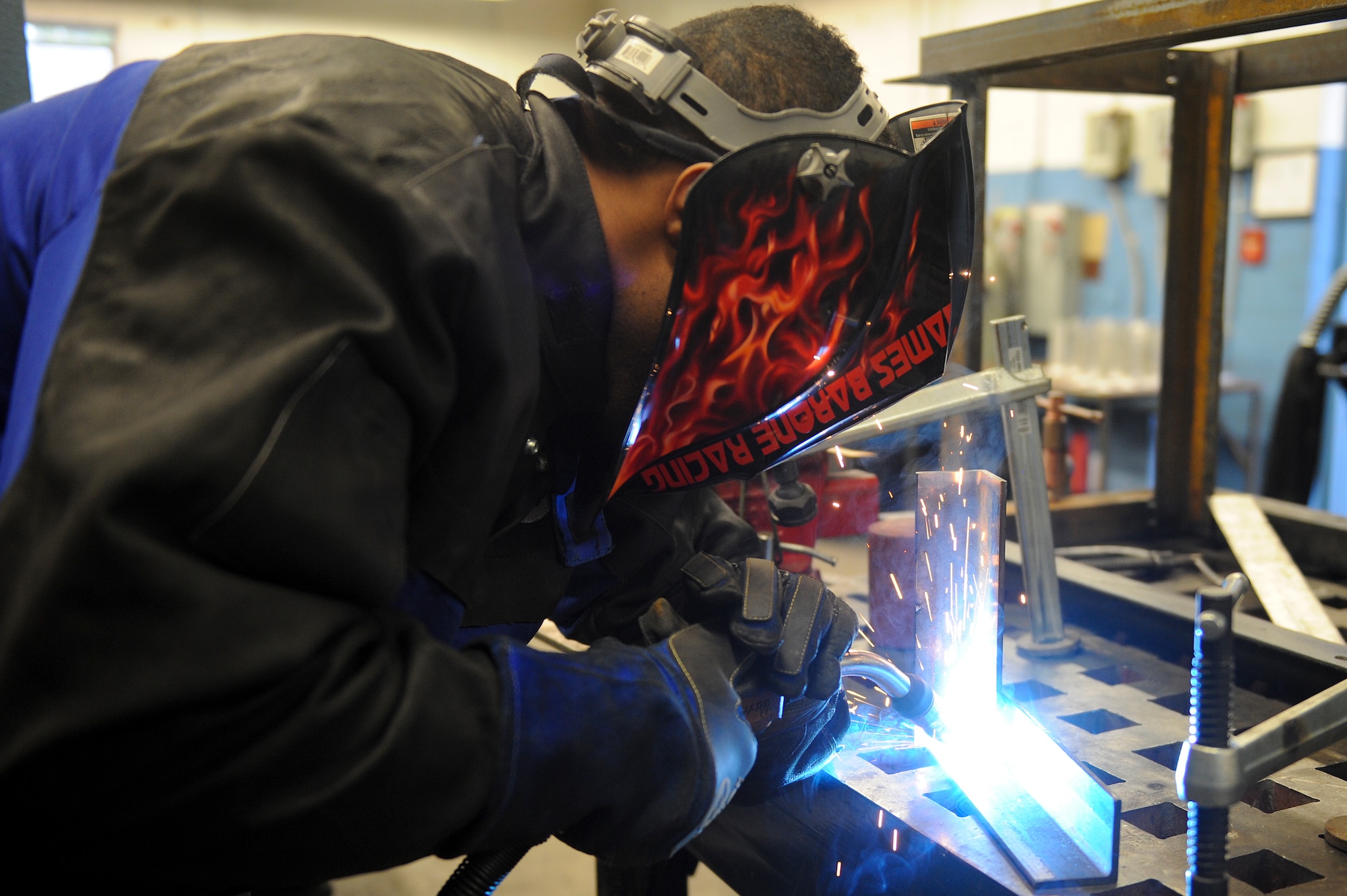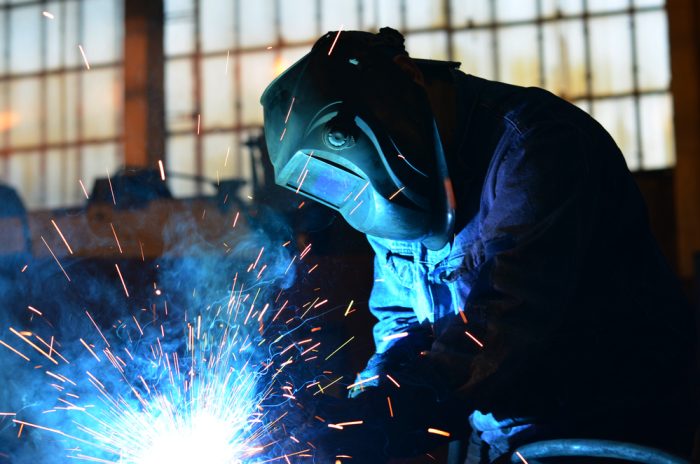Common Welding Repair Work Issues and How to Address Them Efficiently
Welding repair work typically run into a variety of concerns that can jeopardize the stability of the final product. Common issues consist of insufficient infiltration, porosity, and misalignment, to name a few. Each flaw presents one-of-a-kind obstacles that call for details strategies for resolution. Comprehending these problems is necessary for welders intending to improve their abilities and results. This discussion will explore these typical welding repair work issues and reliable techniques to address them.
Inadequate Penetration
Insufficient infiltration occurs when the weld steel stops working to totally fuse with the base material, leading to weak joints and potential structural failings. This issue usually comes from inadequate heat input, inaccurate electrode angle, or improper welding speed. Welders might experience insufficient penetration due to a miscalculation of the necessary criteria for a specific product thickness or kind. In addition, contamination on the base material's surface area can hinder efficient bonding, exacerbating the issue. To deal with inadequate infiltration, welders need to ensure suitable settings on their equipment and keep a clean job surface. Routine examination of welds is recommended to identify any type of shortages early, enabling timely improvements and the avoidance of jeopardized architectural honesty in welded settings up.
Porosity
Porosity is a typical issue in bonded joints that materializes as little gas bubbles caught within the weld metal. This flaw can jeopardize the integrity of the weld, resulting in minimized toughness and prospective failure under stress and anxiety. Belgrade Welding. Porosity typically arises from contamination, moisture, or improper welding methods, which allow gases to get away right into the liquified weld pool. To resolve porosity, welders must assure proper surface area prep work, keep a tidy workplace, and use appropriate welding parameters. Furthermore, selecting the right filler material and shielding gas can reduce gas entrapment. Normal assessment and screening of welds can help recognize porosity early, guaranteeing timely corrective actions are taken, therefore preserving the top quality and dependability of the welded structure
Misalignment
Misalignment in welding can emerge from various factors, including improper configuration and thermal expansion. Comprehending the origin causes is essential for reliable resolution. A number of modification techniques are offered to straighten parts and ensure structural stability.
Sources of Imbalance
Welding imbalance frequently stems from a variety of underlying concerns that can jeopardize architectural stability. One main cause is improper fit-up of parts prior to welding, which can result in voids and unequal surfaces. Variants in thermal growth throughout the welding process can additionally lead to distortion, especially if the products being signed up with have various coefficients of development. In addition, poor fixturing and clamping might fail to hold parts safely in position, resulting in movement during welding. Inadequately kept devices, consisting of welding equipments and devices, might introduce incongruities in the weld grain, more adding to imbalance. Ultimately, driver mistake, coming from insufficient training or experience, can likewise play a considerable duty in producing misaligned welds.
Adjustment Methods Available
Addressing misalignment successfully needs a mix of restorative techniques customized to the particular concerns available. One common technique is the use of jigs or components to hold components in the correct setting during welding, making sure regular placement. Additionally, pre-heating the products can help decrease distortion and boost fit-up. For substantial misalignment, mechanical realignment strategies, such as making use of hydraulic jacks or clamps, can be employed to correct the setting before welding. Post-weld warmth treatment may also be needed to eliminate tensions triggered by imbalance. Careful examination and adjustment throughout the arrangement stage can stop misalignment problems from coming to be significant problems, advertising a smoother welding process and boosting general structural honesty.
Distortion
Distortion is a common difficulty in welding that can emerge from different elements, consisting of unequal cooling and heating. Comprehending the reasons of distortion is vital for executing reliable prevention strategies. Resolving this issue not only enhances architectural stability but also improves the general high quality of the weld.
Root causes of Distortion
When subjected to the intense heat of welding, products often go through changes that can lead to distortion. This sensation largely occurs from thermal development and tightening throughout the welding procedure. As the weld area warms up, the material broadens; upon air conditioning, it acquires, which can develop inner stresses. On top of that, unequal heating throughout a workpiece can aggravate these stresses, causing warping or flexing. The sort of product likewise plays a significant function; steels with differing thermal conductivity and coefficients of expansion may respond in a different way, leading to uncertain distortions. Poor joint layout and poor fixturing can add to misalignment throughout welding, enhancing the chance of distortion. Recognizing these reasons is essential for effective welding repair work and prevention strategies.
Avoidance Techniques
Efficient avoidance methods for distortion during welding concentrate on managing warmth input and guaranteeing appropriate joint style. Maintaining a constant warmth input aids to lessen thermal development and tightening, which can result in distortion. Utilizing strategies such as preheating the work surface can additionally minimize the temperature level gradient, advertising uniform heating. In addition, selecting ideal joint styles, such as T-joints or lap joints, can improve stability and lower anxiety concentrations. Applying appropriate fixturing to protect the workpieces in location further aids in preserving placement during the welding procedure. Staggered welding sequences can disperse warm extra evenly, stopping local distortion. By applying these techniques, welders can substantially reduce the probability of distortion and boost the overall quality of click to read more their welds.
Fracturing
Splitting is an usual problem encountered in welding repairs, commonly resulting from various factors such as incorrect air conditioning prices, material choice, or poor joint prep work. The occurrence of fractures can substantially compromise the integrity of the weld, resulting in prospective failings throughout operation. To address this issue, welders must initially evaluate the source, making sure that products work and suitably selected for the specific application. Additionally, regulating the air conditioning rate throughout the welding process is important; quick air conditioning can cause anxiety and cause splitting. Proper joint layout and preparation likewise contribute to reducing the threat. Applying these approaches can boost weld high quality and longevity, inevitably decreasing the probability of splitting in finished weldments.

Insufficient Fusion
A significant concern in welding fixings is incomplete blend, which happens when the weld steel does not effectively bond with the base material or previous weld passes - Montana Mobile Welding and Repair Belgrade Fabrication. This issue can bring about weaknesses in the joint, possibly compromising the integrity of the bonded framework. Factors contributing to incomplete blend consist of insufficient heat input, inappropriate welding strategy, and contamination of the surfaces being signed up with. blog here To address this concern effectively, welders should assure correct pre-weld cleaning and surface preparation, in addition to readjust their welding specifications to achieve adequate infiltration and fusion. Routine evaluation during the welding process can additionally aid determine insufficient combination early, enabling timely rehabilitative procedures to improve the overall high quality of the weld
Overheating
While welding repair work can improve architectural integrity, overheating provides a substantial challenge that can bring about product deterioration. Too much warmth throughout welding can alter the mechanical buildings of metals, resulting in decreased toughness, raised brittleness, and bending. This phenomenon is particularly important in high-stress applications where architectural reliability is vital. Identifying getting too hot can entail aesthetic assessments for staining or distortion, along with monitoring temperature during the welding process. To reduce the threats linked with overheating, welders ought to utilize proper strategies, such as controlling warmth input, adjusting travel rate, and utilizing appropriate filler products. In addition, executing pre- and post-weld warm therapies can assist recover product residential or commercial properties and boost the total top quality of the fixing, making certain long-term efficiency and security.
Regularly Asked Inquiries
What Are the Common Indications of a Welding Issue?

Just How Can I Evaluate My Welds for High quality?
To test welds for quality, one can use visual examinations, ultrasonic testing, and radiographic approaches. Each technique ensures architectural integrity, determines defects, and verifies adherence to specified requirements, eventually boosting the integrity of the bonded joints.
What Safety Preventative Measures Should I Take While Welding?
When welding, one should prioritize security by wearing suitable individual protective devices, ensuring appropriate ventilation, safeguarding flammable materials away, preserving a tidy work space, and being aware of environments to stop crashes and injuries.
Can I Repair a Weld Without Renovating the Entire Joint?
Repairing a weld without redoing the whole joint is feasible, depending upon the damages (Montana Mobile Welding and Repair Belgrade Fabrication). Methods such as grinding, including filler product, or using a welding process can successfully resolve certain flaws while maintaining the surrounding structure
What Equipment Are Essential for Efficient Welding Fixes?
Necessary tools for effective welding fixings include a welding device, cable brush, mill, protective equipment, clamps, and filler materials. Each tool plays a crucial duty in making certain high quality and safety throughout the repair service procedure. Porosity commonly occurs from contamination, moisture, or inappropriate welding strategies, which permit gases here are the findings to leave into the liquified weld pool. Improperly maintained devices, consisting of welding equipments and devices, might introduce inconsistencies in the weld bead, more adding to misalignment. When subjected to the intense heat of welding, materials commonly go through changes that can lead to distortion. Breaking is a typical problem come across in welding repair services, typically resulting from different aspects such as incorrect cooling prices, material option, or inadequate joint prep work. A considerable problem in welding repair services is incomplete combination, which occurs when the weld metal does not appropriately bond with the base product or previous weld passes.